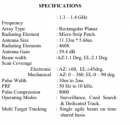So, the P8I Poseidon that India operates may sniff out a submarine and the SMART missile may be launched from either Indian coast or Andaman Nicobar to that area. I think it's a good idea. But I really don't think China has any intention of attacking India in the Indian Ocean ( that's where India is made to perceive a threat but China is pulling a ruse ). China effectively can't secure any flow of goods in Indian Ocean other than by means of General damage to world shipping ( a case of "If I can't trade then no one will trade" ).
I also don't think it makes sense for Indians to be considering that PLAN is preparing to build a network of naval bases in the Indian Ocean and have a permanent presence in maritime territory close to India, but that is what they are really considering.
For example, the development of the port of Hambantota, which it now leases for a 99-year term for $1.2 billion as a debt swap for the Chinese loan, although voices in Sri Lanka contest this, claiming the lease it was made to generate money to service its foreign debt, not the repayment of the Chinese loan. However, whatever the specs, the fact is that Hambantota, located on Sri Lanka's south coast, will have substantial Chinese control. In fact, Sri Lanka even moved its naval base from Hambantota to Galle. This has an effective repercussion in the Indian strategic plans considering that the PLAN is advancing towards the Indian Ocean.
Control of the port of Hambantota gives China an advantageous position in the eastern Indian Ocean to face the Malacca Dilemma. Passing the bill, which will soon become law, will give China an additional 269 hectares of reclaimed coastal area off the southwestern port of Colombo, with little oversight by the Sri Lankan government and will allow it to take control total to the extent that it can even regulate the circulation of people and since the use of any currency will be allowed, the Yuan will be a certainty.
Sri Lanka occupies a strategic position in the Indo-Pacific. Its southern tip extends along some of the most critical sea lanes in the world, over which most trade and almost all energy passes to the nations east of the Strait of Malacca, namely China, Japan, South Korea, Singapore and many others.
Therefore, it is essential to ensure that the safety and security of these maritime routes and the ships that transit them are not compromised. China is heavily dependent on oil from the Persian Gulf - 80% of its oil imports come from there and pass through the Straits of Malacca, one of the most strategically important geopolitical bottlenecks in the world. Before entering the Straits of Malacca, this traffic passes through the traffic separation scheme off Dondra Head, which is located only about 10 nautical miles south of Hambantota.
Control of this port is therefore a strategic asset for China in mitigating its trade and energy vulnerability in what is known as its Malacca Dilemma. A strong PLA Navy presence in this region will not only secure its own trade, but will also allow it to disrupt, delay or destroy trade and energy flows to its adversaries. China's Malacca Dilemma is its apprehension that India will be able to block Western approaches to the Straits of Malacca as they are in close proximity to the Andaman and Nicobar Islands and the US and its allies in the Pacific being able to block the eastern approaches, thus crippling the movement of its merchant, as well as naval navigation.
From an Indian perspective, this is not good news. India was very uncomfortable with the previous Rajapaksa regime and its proximity to China. India's goal is to include Sri Lanka in India's SAGAR (Security and Growth for All in the Region) Doctrine, promoting inclusive and cooperative capacity building to protect the greater Indian Ocean region from traditional, non-traditional, transnational and subconventional security challenges that abound in this region. There are plans to integrate Sri Lanka into the Coastal Security Network and the Sri Lankan Navy also operates offshore patrol vessels built in India.
PLAN's permanent presence in the Indian Ocean is a source of concern for the Indian Navy, which has been signaled by successive Chiefs of the Indian Navy. The lease of Hambantota and the Port City project makes it almost certain that the PLA will soon have a presence in these waters that could include the settlement of ships and submarines, as well as a holding post to sustain a longer deployment in the Indian Ocean. PLAN's presence in the eastern Indian Ocean will certainly inhibit the Indian Navy's deployment options and neutralize the geographic advantage it enjoys in those waters. China has been expanding its presence in the Indian Ocean and regularly deploying research ships (spy ships) to collect intelligence and hydrographic data. The availability of a base would allow for a more sustained presence.
Perhaps an even greater concern for the Indian Navy is that Hambantota and Colombo are less than 300 miles from the Indian mainland, about 400 miles from Chennai, and less than an hour's flight. Therefore, India will have to adapt to the presence of its main adversary practically in its backyard and shape its preparedness and response accordingly.


